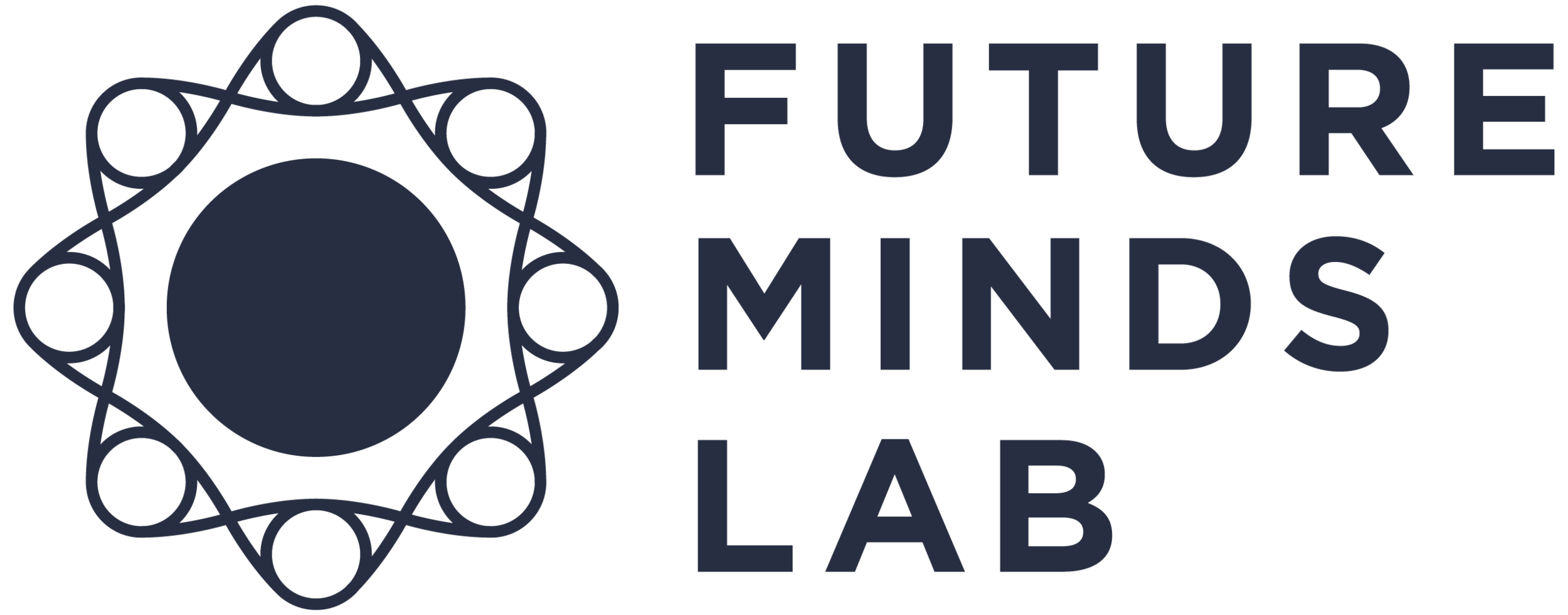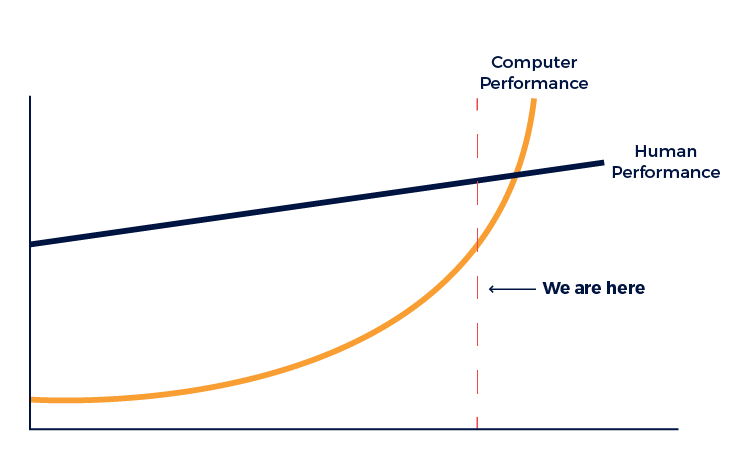How to be good at human things in a post AI world
“The human being is the only animal that can ____”
In the future world, AI will do what AI is very good at, and humans will do what humans are very good at; and together, they can both do things neither could have achieved on its own. That is unless AI can just do it all by itself...then what?
In 1985, when the internet was just a wee little thing, very few people imagined the pace at which it would sprawl across the world. Yet in 2009 journalist Oliver Burkeman wrote, “Without most of us quite noticing when it happened, the web went from being a strange new curiosity to a background condition of everyday life”.
The same may be said of artificial intelligence, which is still realising it’s ubiquitous destiny. As neatly put by Tim Urban, we’re standing on the brink of an exponential growth spurt. And the question everyone is grappling with is if we, as humans, will grow with it (or become extinct. For more morbid readings, head here).
What is Artificial Intelligence?
Artificial Intelligence as a term is incredibly broad and often misrepresented. Not to be confused with Machine Learning (which is just a method for achieving artificial intelligence), computer scientist Joanna Bryson finds it useful to start first with a basic definition of intelligence which she describes as simply “behaving appropriately to the context”. She goes on to describe how Artificial intelligence is anything that a human has built, that does the below:
Transforms information
Takes action and
Behaves appropriately to the context.
At its most basic, think of AI less as a sentient robot from the Jetsons and instead, as perhaps just a parking meter.
Artificial Intelligence is organised into three sub-types:
Artificial Narrow Intelligence (ANI): Also referred to as weak AI, ANI is the kind of AI that exists in our world today, and many of our products are infused with it. ANI can achieve superhuman capabilities for single tasks and very specific domains. For example, an AI that is programmed to translate languages may perform this task exceptionally. It does however take a large amount of labelled data to train it, and couldn’t tell you what a cat looks like, or how to solve a SUDOKU. So don’t ask.
Artificial General Intelligence (AGI): Leveling up, AGI exhibits human-level intelligence across the board and can perform any task that humans can. More than just a lean mean data-crunching machine AGI can strategise, reason, solve problems, think creatively, plan, learn, adapt, integrate prior knowledge, adjust to ambiguity and think abstractly. Many experts believe there’s a likely chance we’ll reach AGI by 2040. Strap in.
Artificial Superintelligence (ASI): Philosopher Nick Bostrom in his book Superintelligence defines ASI as “any intellect that greatly exceeds the cognitive performance of humans in virtually all domains of interest”. The same experts as above believe there’s a likely chance we’ll reach ASI by 2060. I know, this blog is moving quickly.
Is AI here to replace us? Or enhance us?
In 1962, Douglas Engelbart envisioned that computers could be used as a way of augmenting human intellect. Rather than using computers primarily as tools for number crunching and pattern recognition, they were real-time interactive systems that humans would work with to expand their own capacities. An AI system designed to complement (rather than replace) human intelligence.
What was a pretty radical idea at the time has grown in popularity, with many experts working off a similar philosophy:
“AI will be a tool that allows people to learn faster and more effectively, brings new augmented capabilities to human tasks, and helps detect and reduce mistakes and achieve better insights and results.”
- John R. Smith, IBM Fellow
How will we work together?
In many ways we already are. If you use Siri, maps, predictive text or an email service that automatically flags spam, then you’re cyborging your way through your day hand in hand with AI. But this is just the beginning.
In his 2018 talk Kai-Fu Lee (ex-Apple, Microsoft, Google and Silicon Graphics) maps out four ways in which we’ll work with AI. Outlined below are current/near future examples of human-AI collaboration in each of four quadrants.
Human wrapping around AI: Artificial intelligence working behind the scenes
AI Medical diagnosis Doctors make the final decision and are the primary contact for the patient, providing compassionate human care. Research shows promising results for diagnosing Alzheimer's disease, mood disorders, skin cancer, lung cancer and more. However, in the real world IBM Watson was criticised for unsafe medical recommendations
Medical tools: Artificially Intelligent AR Microscope for real-time detection of cancer.
Architectural design: AI generates architectural drawings to optimise floor plan space, structural integrity and sustainable use of materials, with humans building, crafting and shaping the interior design finishing touches.
Predominantly Human: Artificial intelligence supplementing humans, who play the leading role
Real time creative art tools: The human artist provides the creative direction and vision whilst the AI sketches, resizes and colours (much like we delegate mathematical calculations to a computer today).
Building an argument: The human directs and delivers arguments whilst AI crowdsource arguments from broader (human) networks, sorts through millions of articles and feeds the human supporting arguments, facts and figures (See: IBM Project Debater).
Half AI/Half Human: Artificial intelligence responsible for a distinct section of the task, whilst also working side by side with humans
AI Journalists: Artificial Intelligence co-writes, detects early patterns/story opportunities, generates short news stories alongside content written/edited by humans. (Research on a fake news generating algorithm released by Open AI earlier this year caused a major ruckus. Closely followed by a fake news UN speech generator)
Science: Using Artificial Intelligence to mix chemicals, discover new compounds, model the universe for physics experiments, and understand the cosmos. AI extracts knowledge both on it’s own, and in collaboration with human interpreters.
Just AI: Artificial Intelligence working on it’s own to complete a task end to end
Autonomous vehicles: self-driving cars, autonomous drones, and advanced industrial robots
Live-captioning: Google’s live captioning speech to text
Air Traffic Control: artificial intelligence doesn’t get tired, doesn’t lose focus, can keep track of many more variables than a human can, can see through fog and cut time between flights down to as close as 20 seconds.
As AI improves, the collaborative human-AI relationship grows more complex. Some of these use cases can move quadrants simply if we wish them to move: we can upgrade AI’s autonomy by shifting the use case down to the lower left quadrant, and if we want more humans in the task, we can shift it up to the...
Hang on. Where’s the human only quadrant?
There might not be one. Don’t panic.
Harvard psychologist Daniel Gilbert says that every psychologist must at some point in his or her career, write a version of “the sentence”. Specifically, the sentence reads like this “The human being is the only animal that can ____”.
If you know the answer to this question today, it may not be the answer tomorrow. Plausible answers to this sentence changes every few months, in tandem with advances in AI.
Seeing AI create and do things we thought to be exclusively humans shatters the illusion of our specialness. Birds (insects, bats etc) used to be the only things that could fly. That used to be their very own kind of specialised intelligence. Until we built planes. Now, flying a plane doesn’t actually make someone a bird, and it doesn’t make birds any less special, but it does mean we can now do many of the things that previously only birds could.
Daniel Gilbert's question is important, and is one we should continue to ask. But, to prepare for a future with advanced AI, we should also ask ourselves another question:
“What does it mean if there’s nothing terribly unique about being human?”







